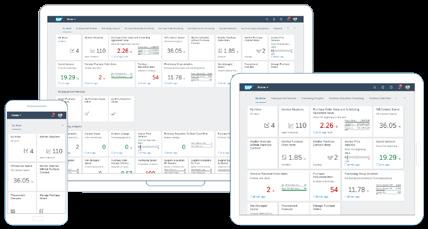
9 minute read
HOW DO YOU KNOW YOU ARE DOING A GOOD JOB AS A LEADER?
Author: Elaine Dutton
YOU ARE AT THE TOP OF YOUR ORGANISATION – HOW DO YOU KNOW YOU ARE DOING A GOOD JOB AS A LEADER? IT IS A REALITY THAT THE HIGHER UP YOU GO IN YOUR CAREER, THERE ARE OFTEN LESS PEOPLE READY TO GIVE YOU HONEST AND OBJECTIVE FEEDBACK. ASIDE FROM YOUR SENIORITY, WHICH POTENTIALLY WARDS OFF OTHERS TO KEEP OPINIONS POLITELY TO THEMSELVES, THE CULTURE OF THE ORGANISATION MIGHT NOT BE CONDUCIVE FOR SUCH FEEDBACK TO BE SHARED.
This is where a 360-degree feedback process could come in helpful. In the same way that a GPS tracker needs multiple points to zone onto an exact location, a 360-degree appraisal uses those around you to provide the ‘coordinates’ of your leadership acumen. The size of the organisation and the type of role performed typically dictates the number of people involved in the feedback process.
Typically, this ranges from 3 to 6 individuals who work with you in different capacities - shareholders, fellow directors / partners, subordinates, junior employees, even ex-employees if relevant.
There are a number of ways how a 360-degree appraisal can take place. An efficient method would be for the reviewers to answer a series of questions in a survey format. An example of such questions would be – “Our CEO/Director shows respect and listens to views different from his/her own” or “Our CEO/Director communicates the vision in an engaging manner”. These questions would tap different aspects of leadership. Whilst this method is efficient and results could be summarised statistically, it does have disadvantages. A key issue is that results vary depending on what was asked and how it was asked. Questions to such surveys have to be carefully selected to reflect the complex and diverse aspects of leadership, being careful that the wording is not ambiguous and the survey not too long. Surveys are also notorious for lacking depth and the results might leave you with more questions than answers.
Crucially, any 360-degree process relies heavily on anonymity.
Very few employees would be ready to be open and candid about their opinion of their senior leaders, especially if there was the possibility for their identity to be disclosed. Whilst online surveys can be anonymous, employees may distrust the process – e.g. who would be receiving the results? Why was I picked to give the feedback? What happens if I do not reply?
A way to mitigate these difficulties is by appointing an independent HR professional to coordinate the 360-degree feedback process. The survey method can still be used but with an expert on board, you can ensure that the right questions are asked.
Respondents would also have their mind at rest that replies are received by a party external to the organisation who would take care of collating all data and presenting them to the business leader/s as one complete report.
The survey method for 360-degree feedback would offer top management fruitful insight, however, many comment that this still does not address the issue of depth. This is where an interview format for 360-degree feedback is ideal.
After careful selection of the main questions to guide the ‘interview’, the independent professional would sit with each person selected for the exercise and gather all impressions and feedback. The advantage is that the employees providing the feedback can go in as much detail as they like without being confined to the way the question was asked. People tend to provide more information verbally than if they had to write it in a tidy box in a survey – particularly if the person sitting at the other end is a trained professional who knows how to listen, gather feedback, ask the right followup questions and can guarantee anonymity to the interviewee. Such interviews typically run for 30-45 minutes and the amount of data collected can be voluminous. However, trained professionals know how to disentangle pieces of feedback and group them in themes in a manner that is insightful to the business leader/s being reviewed. The juice of all these interviews is written in a report that is composed of the overall impressions gathered by the professional supported by the feedback of those involved in the exercise. Carried out well, a 360-degree feedback process is a powerful exercise that can provide valuable insight to business leaders on the way those around them perceive their leadership skills. Sadly, numerous companies adopt a 360-review process among their workforce yet fail to involve the more senior members of the organisation.
As a business leader, it is in your interest to ensure that your organisation has a culture of open feedback and this can only take place if you and the other members of your top management team are involved in the same 360-degree feedback exercise. This gives the message that those leading the organisation welcome feedback and are interested to know how they are perceived in order to improve and have a path for their own personal and professional development.

This article has been authored by Elaine Dutton, CSB Group’s Head of Human Resources and Employment Advisory Services.




Ethical business is where opportunities grow.



Responsible entrepreneurship calls for building bridges between business organizations and the communities they operate in.
We believe that the success of any entrepreneur is inextricably linked to empowering individuals and creating thriving communities.
Grant Thornton can help you integrate responsible leadership, ethical use of technology, and good governance practices in your business.
G Get in touch with us or visit www.grantthornton.com.mt/sustainability to find out how sustainable entrepreneurship can help your business go beyond.
Audit | Tax | Advisory | Outsourcing
ADOPTING ANALYTICS
FOR THE SME
Author: Damian Heath
DECISION SUPPORT SYSTEMS WERE, UNTIL RECENTLY, ONLY AVAILABLE TO LARGE ENTERPRISES. THE COMPLEXITIES AND COSTS ASSOCIATED WITH BUSINESS INTELLIGENCE OR ANALYTICS SOLUTIONS MADE THEM PROHIBITIVE FOR OTHER COMPANIES.
Smaller businesses had to rely on standard reporting built into their operational applications or, at best, employees had to export data and indulge in complex data mash-ups within the limitations of solutions like Excel. Reporting resources and time, be it directly from end users or vendors building the capabilities into the applications, focused on provisioning mandatory reporting for financial or industry regulators. A business would largely survive on the skill and instinct of the management due to lack of datadriven insights, limiting growth to the bandwidth and skills of that leadership. Improvements in business applications, databases and technologies such as the cloud, memory database performance, and IoT offer the means to build out the value of reporting and decision support. To realise such value, business owners and their advisors have to assess how and what data should be captured and to what standards and quality.

A professional services company needs to understand their performance by the service areas provided, their type of clients and projects.Retailers, for example, will want to understand performance against product categories, brands and stores. The initial step in any analytics journey is to define these dimensions and measures, and then more importantly design how to capture them accurately and consistently within the processes and transactions of your business. This is an often-forgotten challenge in Business Intelligence and Analytics; the solution cannot be built in isolation from the core business and processes. Captured “measures” such as revenue, direct costs and overheads, must be linked with business dimensions in a structured way. For instance, a retailer recording sales by outlet would store this dimension with a structured “identifier”, so the data can be specific and historically consistent.
While legacy ERP, General Ledger, or similar transactional systems allow capturing of quality structured data in a consistent manner, historical transactional systems often pose a further challenge to restructure and transpose that data due to the finite resources available to “on-premise” systems. Data is traditionally optimised to support transactional processing, allowing it to be added, deleted, or updated at a granular level, but it fails to support timely aggregations or other on-the-fly calculations. Hence,
traditional BI solutions lay separate to the business execution transactional systems, and often represent a delayed picture of the business.
This challenge is, to some extent, addressed by vendors who transition their platforms to the cloud. Numerous clients running their business on common cloud infrastructure and solution vendors that seek to differentiate themselves, have seen cloud-based business solutions blend analytics into their functionality to solve common problems. This is enabled by virtue of a more powerful infrastructure at the disposal of the cloud vendors, relative to what had previously been available to the client and their “on-premise” solutions. In such ways, decision support becomes ingrained within the operation. This is further supported by modern browser user interfaces, exploiting HTML5 type technologies and thereby embedding data, information and KPIs into the very tiles and buttons from where transaction execution of functionality and / or a deeper review of the data is provided.
This aggregation of transactional data and analytical data into one source also brings another tangible benefit as analysis goes “real-time”. A retailer’s POS, Inventory and Finances stay aligned, provisioning up to the minute assessments on how a new store layout is performing, and against previous benchmarks. Success can be rolled out to other stores within the day, failures rolled back.

Add or “mash” into your financial data, external data sources such as loyalty programs and in-store footfall counters and you can assess the success of your different channels and their crossadoption, or what your conversion rate is from people entering a store to those making a purchase (a basket). The cloud also allows you to bring into the analytics domain 3rd party data, whether assessing seasonality / implications on sales or tracing social media sentiment across your brands. Like retail, every industry has its own KPIs, data and key questions to assess. The process, however, remains the same.

You first need to assess how you want to understand your business, what data you need to capture and retain to conduct this assessment. How do you maintain quality and consistency of that data? Where will you put that data and how will you structure it to make it accessible? How can you deliver such data to the right people so that they can investigate, gain value and make the right decisions for your business? All this may have implications across your whole IT landscape. How do you establish the correct architecture, not only to support execution within the business as it is now, but to help anticipate changes and build the business you want tomorrow?
Damian Heath is the Director and Lead for Deloitte Malta’s Enterprise Technology and Performance function, with over 20 years of international experience.








